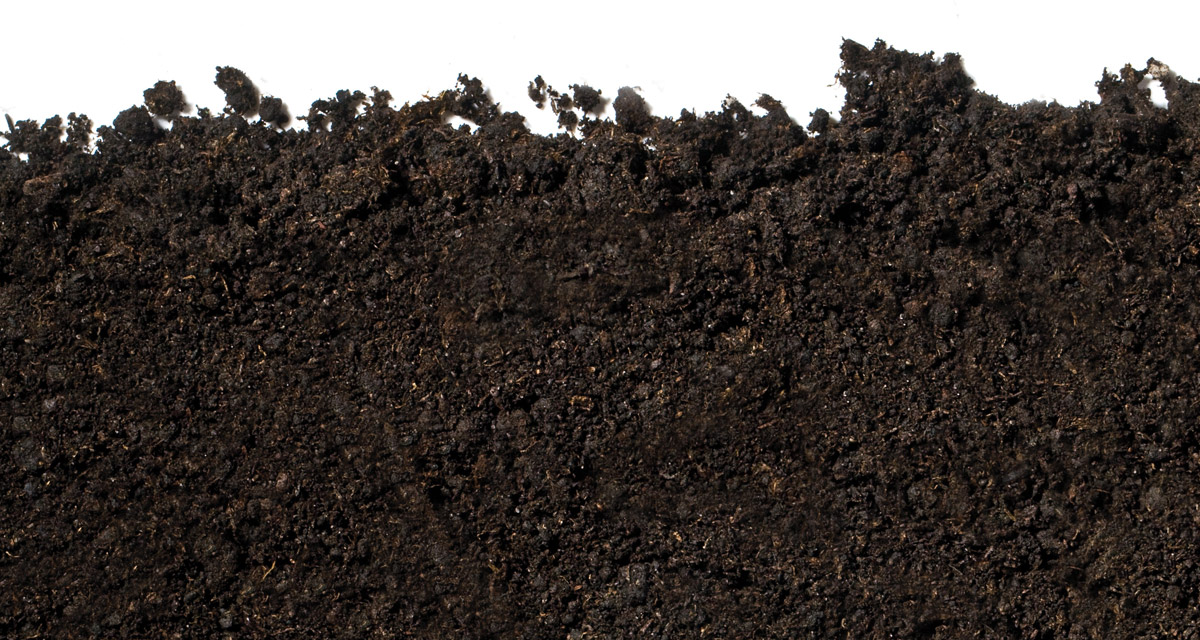Whenever the blade of the gardener’s shovel is pressed down into the ground, the gardener’s hope is that the shovel’s steel reveals a beautiful coloring of soil, mixed with a few earthworms. We are not all that fortunate to find property which such enriched and well-nurtured soil. It is our task to improve the conditions by amending sandy or clay soil with essential nutrients.
Nutrients Essential to Plants
Soil color is not a true indication of quality; however, it can provide clues about the conditions. For example, light coloring will indicate a grainy topsoil and offer low organic content, which implies it will not offer proper conditions for a plant to grow. The other extreme is soil that is dark, reflecting poor drainage and a high level of organic matter content. In the Piedmont Triad, our subsoil colors are often yellow and gray, brown and red.
Nitrogen: The nutrient responsible for healthy leaves and stem growth is nitrogen. One means to consider for deficient nitrogen content is adding compost manure or blood meal to your soil. (Discoloration of leaves on plants will indicate a deficiency in nitrogen or phosphorus.)
Phosphorus: An essential nutrient to foster root growth, especially for root crops or flowering bulbs. Since nitrogen, phosphorus, and potassium are such important nutrients, consider adding lawn clippings to compost to boost the organic nature of your soil.
Potassium: This particular nutrient aids in a plant’s health. While maintaining growth, potassium also provides water to boost its sustainability.
Acidity vs. Alkaline
pH levels impact a plant’s nutrients; therefore, it is important to know the levels of your soil to ensure a plant is receiving what it needs from the soil. The scale of pH ranges from 1.0 to 14.0, with 7.0 as a neutral value. The lower the number below 7.0, the more acid the soil; likewise, the higher the number beyond 7.0, the greater the alkalinity, or amount of clay. While many plants are stable in a low-acidic to neutral range, measuring 6.2 to 6.8, rhododendrons, blueberries, camellias, and lilies favor acidic soils, found in well drained and loose soil. In contrast, lilac bushes and clematis both thrive in alkaline environments.
Soil Too Acidic: To alter acid pH levels, you can raise the organic matter by adding lime, compost, manure, wood ash, grass clippings, and/or leaf mold. If plants are already in the ground, it is important not to shock them; therefore, sprinkle a little at a time, and do not reapply quarterly in the year.
Soil Too Alkaline: Gardeners can use elemental sulfur or iron sulfate on soil that is heavily compacted or is comprised mainly of clay. One of the more natural ways to lower pH levels is to mix compostable soil with coffee grounds. (If plants are planted, you can still work elemental sulfur into the soil without disrupting the roots or root systems.)
Tip: Avoid using automatic watering systems on clay soil. Due to these systems’ propensity for frequent watering, plants may drown if too much water is added.
Monitor the soil to determine if the pH levels have changed. Take notice of the plant’s health, its appearance, and leaf coloring. You will need to take swift action if your plant is stressed.
A Natural Amendment – Composting
Without the cost of buying bags of soil conditioner and manure, as well as concentrated levels of potassium or bone meal, one of the most valuable efforts you can achieve is through composting. It takes little time to throw biodegradable items into a closed bucket or container, rather than into the kitchen trash can. The container can be emptied directly into the garden or into an enclosed location, such as a composter. By composting crushed egg shells, coffee grounds, banana or potato peels, rinds or cores from fruit, grass and leaves, pet hair, post-it-notes, paper napkins, shredded newspaper, pine needles and hay, to name just a few of the 160 items, your normal trash receptacle can be reduced by half or as much as two-thirds.
The result of composting is a beautiful blackened soil enriched with the necessary vitamins and minerals plants need to thrive and grow. It is a flower and plant growth-booster. And, ultimately, compost amends the soil by improving the physical and biological properties, and increases its moisture-holding capacity. It is worth the effort and the time to naturally improve our gardens simply by including compost as one amendable solution.























